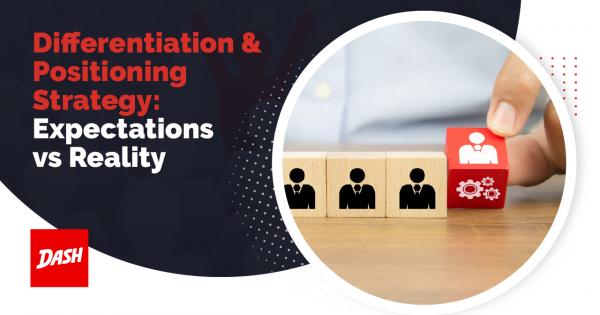Nearly everyone in sales understands (at least superficially) the power of networking. Hundreds of thousands of career professionals have been sat down in convention auditoriums or conference rooms only to have an overhyped MC remedy them like a wayward child.
“Your network is your net worth.” — Porter Gale
But this experience wouldn’t be so ubiquitous if it wasn’t so important, and painfully true. The more relationships you create for your network, the more referrals and leads you generate, and the more sales you make.

But the world continues to evolve at a blistering pace. And while nothing is set to remove the importance of personal networking (despite covid’s attempts), new technologies are streamlining more of the cumbersome parts, leaving more time to focus on delivering value to those network connections. These are the activities that ultimately drive business growth.
Digital augmentation of business networking activities makes it possible to record, manage, automate, analyse, reach out, and follow up with networking contacts in ways established traditional networking methods do not. Integrating virtual networking techniques into existing models can expand your network like never before, helping your professional service organisation grow more rapidly.

Utilising Digital Technologies for Sales Networking
Digital tactics like email marketing, automation, and lead scoring can enhance your networking efforts.
- Augmented traditional networking. What can a sales team member do to enhance their networking skills in a way that’s improved by technology? This can include, but certainly isn’t limited to, recording information, prompting information recorded previously, and doing automated follow-up.
- Virtual networking. How can a salesperson do powerful sales networking in a solely virtual environment?
Your professional service organisation’s digital strategy plays an enormous role in supporting your business development goals. You can use both augmented traditional and virtual networking to create growth through one of three proven approaches:
- Increasing the number of your clients, aka customer acquisition or sales velocity, which is the ability to and speed at which your business acquires new clients.
- Increasing the value of a client, which refers to both customer lifetime value and average transaction size.
- Increasing the frequency of purchase.

Many professional service organisations are digitally active, but they’re not following a defined strategy. This can lead to resources being wasted and opportunities missed. The key to successfully integrating digital in your business development efforts is to clearly define a strategy that includes your aims, your tactics (including digital augmentation), and how to measure performance.
The Art of Networking in a Digital Age
Professional business leaders, partners, and executives tend to fall into the category of ‘seller/doer’. For instance, accounting firms are owned by accountants and CPAs, and attorneys run law firms. But each organisation also has partners, senior partners, or in the case of lawyers, rainmakers, who also focus on bringing in new business. In other words, they’re involved in the company’s business development.
Professional networking is about expanding the quantity and quality of your lead opportunities through relationship building. So, how do you connect your activities to your growth goals?

You look for ways to create connections that allow you to achieve one of the three growth objectives and then decide what tools, techniques, and digital tactics you’ll use to support your efforts.
Here’s an illustration of what we mean.
When you attend a specific network event like a trade show, meetup, industry association event, awards ceremony, or another event, you want to think about:
- Who is going to be in this room with me?
- Who am I going to be talking to?
- What are my opportunities for growth?
Whether you’re meeting virtually or in person, the people you meet could be potential referral partners or clients you can directly connect with. Are there people with whom you can create a strategic alliance?

For example, Xerocon is a well-known accounting industry conference attended by financial advisors, accountants, and bookkeepers around the globe. If you’re an accountant attending the event to network, you should be thinking about which people in the room sell to your target audience and which ones provide ancillary or supportive services. How can you create partnerships or strategic alliances with those people and access their client base?
Most critically, how can you tie this into your three growth objectives?
4 Digital Marketing Tactics for Enhancing Sales Networking
Before we move on to tangible tactics for integrating digital with your business development initiatives, a quick reminder that most networking events are not direct sales events. Don’t expect much success from your networking efforts if you use a networking event to try and hard sell your services to the other people in the room.
Networking’s about meeting new people and building relationships. It’s a top-of-the-funnel process that’s about bringing attention to who you are and what you do. Your goal is to find potential connections for growth opportunities.
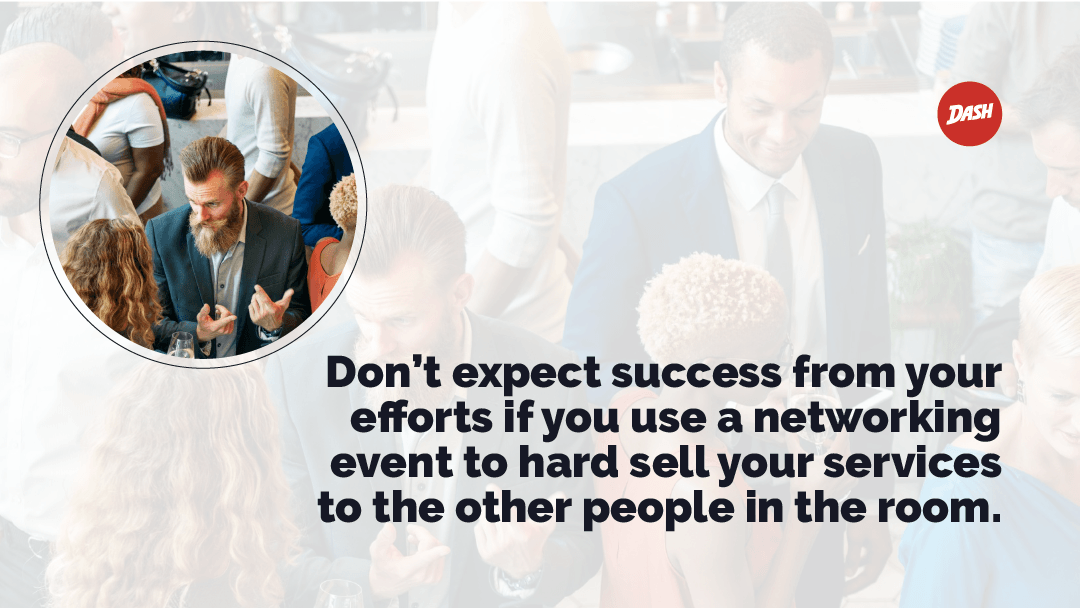
Now to the four digital marketing tactics that will supercharge your business development efforts.
Contact Collection and Proper Segmenting
Business cards may be small, but they can also be one of the most significant contributors to growth. When you walk into a networking event, talk to numerous people, and create connections, the odds are good you’ll leave with a stack of business cards. You’ll also likely take down other people’s names and contact information.
Not so long ago, those cards would end up rubber-banded and placed in a drawer or saved in a Rolodex. You might write notes on the back to remind you of where you met the person, what you talked about, and when you followed up with them. Maintaining contact with these potential leads relied on you or someone on your staff manually calendaring reminders, sending out emails, or making phone calls.

Today, the process begins with moving your contacts from physical to digital. Using a simple app like ScanBizCards to scan your contact details into a digital form that can then be seamlessly uploaded to your CRM. Whether you use a marketing automation system, CRM, or another digital solution, once the information is uploaded you can queue up actions based on who the person is, where you met them, and how they can contribute to your growth initiatives.
Segmentation is a powerful digital tactic that helps you target people based on any number of marketing criteria. For instance, you can segment potential partnerships from those to who you can directly sell your services, putting people into different “buckets” so you can target personalised messages to them. Other ways to segment include by email opens, bounces, and clicks, which you can then further segment by service interest and level of interest. These small activity segmentatoins are the foundation of our next tip: lead scoring.
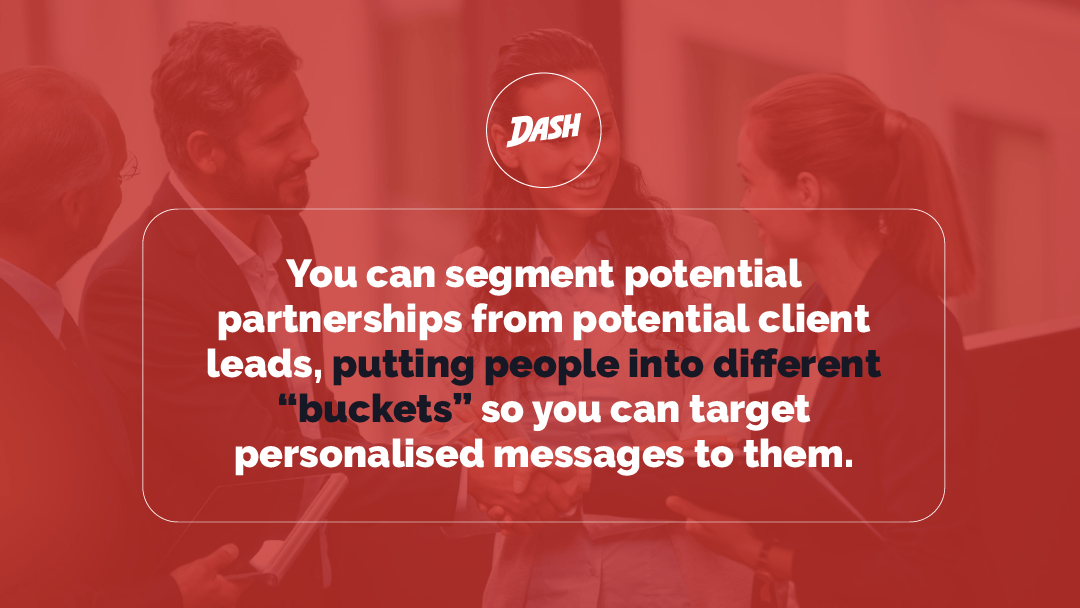
Lead Scoring
Lead scoring assigns values, often in the form of numerical points, to each generated lead. You can score leads based on everything from professional information to how someone engages with your website. Lead scoring helps your sales and marketing teams prioritise leads, respond to them appropriately, and increase the rate at which they become customers. It does this by evaluating small actions and looking for patterns. So as a contact interacts with automatically generated messages or pieces of content, you’re able to track their engagement and be notified to take further actions.
A lead scoring approach amplifies the lead follow-up process in several key ways.
- Prioritise opportunities that matter.
- Increased insight into the effectiveness of your follow up strategy.
- Better alignment between marketing (who creates the assets) and sales.
- Improved insight into your clients buyer’s journey

For instance, let’s say you walk into a networking event filled with wall-to-wall prospective clients. You collect 50 or more business cards, scan them directly into your marketing automation platform or CRM, and then segment or tag them with “client prospect.” Voila! An email sequence campaign is kicked into action for every prospect in that segment.
Now you want to be able to track these leads and see who of those 50 people engaged with what content. Using your lead scoring system, you can discern how a person engaged with your emails, website, and more. Here’s how a typical scenario might play out.
Let’s say one of your leads is called “Sally.” With your software’s data analysis features, you can:
- Track which emails Sally clicked on. Did she click email links and read one or more blog posts? Did she watch a video link in a blog post? And so on.
- Use the digital tactic of lead scoring to understand how engaged Sally is.
- Automatically set tasks like follow-up calls once Sally hits a pre-defined threshold.

The beauty of this digital tactic is you don’t have to remember or calendar any of it manually; the software does it for you.
Best of all, Sally equates this personalised approach with a great customer experience. You meet, she hears from you consistently, and she understands what you do and the value you bring. At the right moment, she gets a call from you. “Hey, Sally, remember we met up a couple of weeks ago? How are you doing with the info we’ve sent?” To her, it seems serendipitous your call comes at just the right time. And you’ve spent less time doing manual tasks and more time pursuing other growth opportunities.
Automated Email Sequences
Email campaigns, drip campaigns, and EDMs (electronic direct mail), whatever you call them, they all serve the same purpose: keeping your brand top-of-mind, establishing trust, and moving your prospects closer to purchase.
If you segment your contacts/leads correctly, you can use the digital tactic of email sequencing to meet one or more of your three growth strategies: increasing the number of clients, increasing client value, or increasing purchase frequency.

When you automate email sequences that match a potential client’s needs, they receive the right messaging that aligns your brand with who they are and what they’re looking for. Of course, you’ll need to develop different email sequences and supporting content for each type of segmented lead.
The important part of all of this is preparation. A killer email sequence isn’t something you write out when you get back from the event. It’s something you worked out in the weeks leading up to said event. It’s entirely possible that your current email system is managed by your marketing team. So sit down with them, do your research, and determine what narrative is the right approach for each segment you plan to engage at your next convention. Then review your results before the next event and look for improvement opportunities.
Virtual Networking via Social Media
For professional service organisations in particular, lead generation follows a digital process that involves:
- Getting contact information and entering it into your chosen software.
- Keeping in touch via automated emails and phone calls.
- Connecting on LinkedIn.
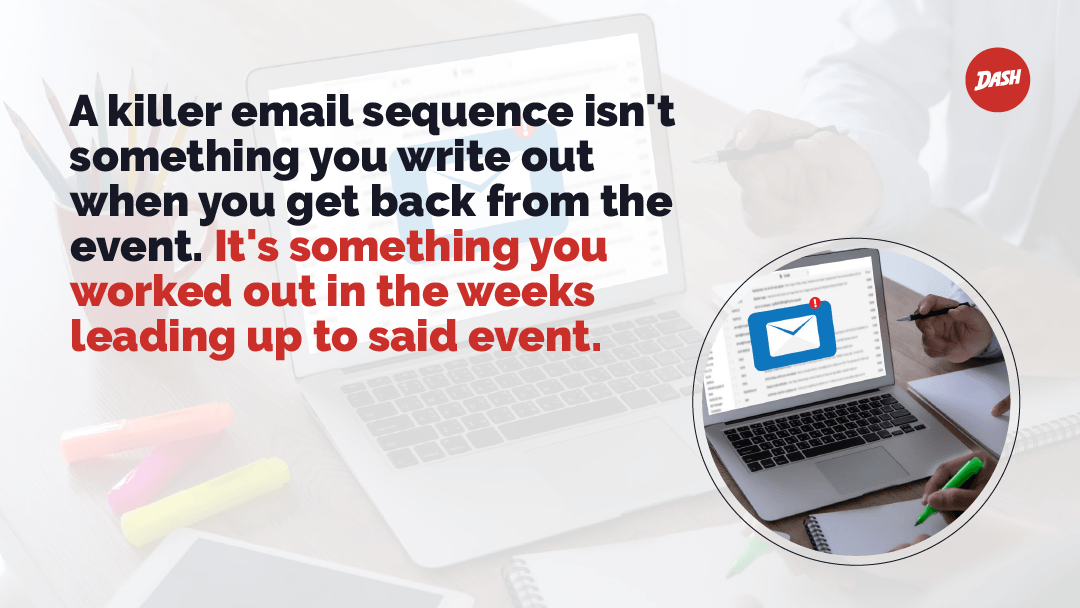
You’re now available to leads across multiple channels. When you create email sequences or website content, you can use social media accounts to distribute it, thereby increasing the frequency with which you expose people to your brand, your message, and your market position. You build trust, and people come to see you as an authority who can help them with whatever it is you offer.
Similar to email, networking over social media is about creating curiosity and connection in a way that works for the contact. Using your lead scoring system, or maybe you just asked, you know which of those 50 people prefer to network on Linkedin over email. And while it might require some extra steps to do effectively, it’s worth it reach people they way they WANT to be reached.
Creating Relationships Through Digital Networking
So, what exactly is digital networking? Digital networks involve data networks, marketplaces, platforms, communications networks, and social media. As the world becomes increasingly digital, learning how to network virtually can expose your business to new relationship opportunities and open it up to innumerable prospects, but only if your networking fundamentals are top notch.
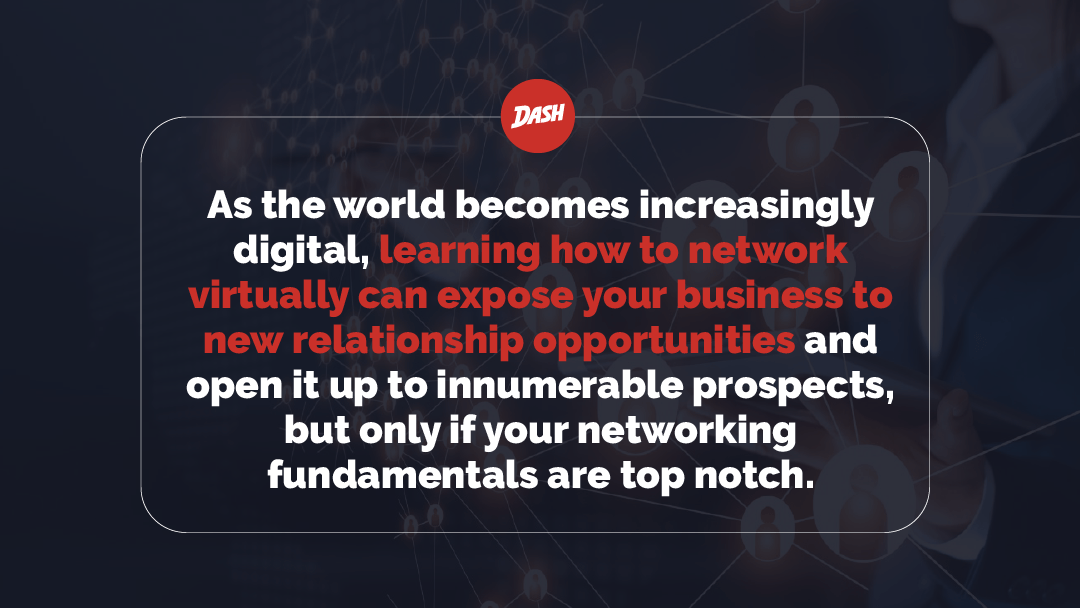
Virtual meetings, messaging platforms, and social media allow you to connect with others on a more personal level. As part of your sales networking strategy, they help you identify the people you need to reach out to and support your business development goals. The best way to approach digital networking is with a mindset of how you can use technology to bring value to new business relationships.
The focus should be on finding the best tools to help you recognise opportunities and support business growth. Questions to consider include:
- What digital tactics can your organisation use?
- How do you use them to enhance networking, i.e., scaling it or making it more effective?
- What are the benefits of doing so?
When we talk about the “3 Bs” of business development, we’re focusing on the buyer, brand, and build involved in a digital strategy. It doesn’t matter if you’re networking in a hotel ballroom or on a virtual platform like Zoom, you need to have a great understanding of who it is you’re talking to, what their issues are, and how you want them to see you in relation to what it is they need your brand for.
The third B typically involves building digital assets that support your growth plans. It can be blog content, your website itself, marketing automation, and or keeping relevant contacts in a database. Once you understand who your buyers are and what your brand’s message is, you can use digital tactics to stay in touch with the people you meet in a scalable, seamless, and measurable way.
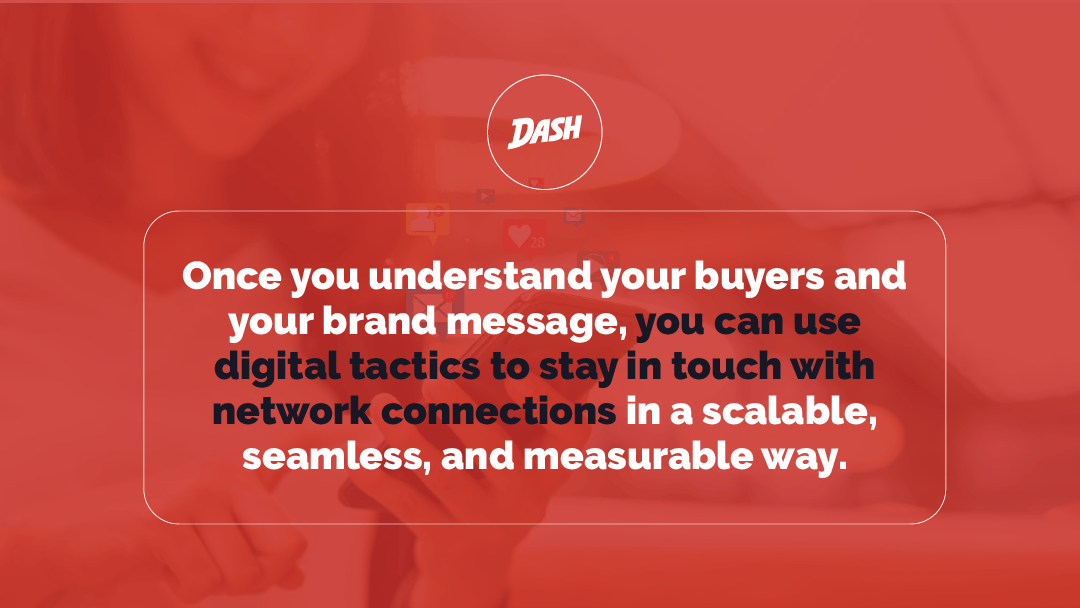
Why is it so essential to get the build part right? Because if you’re delivering your brand’s message in a networking context, you want your website to match the in-person experience they had with you. If it doesn’t, well, frankly, you’re dead-in-the-water straight away! It helps to remember that once you’ve exchanged information, the lead or contact is ultimately “in charge” of how things move forward. The way you represent yourself online should align with what you want them to think about your brand and what actions you want them to take.
So, let’s recap our key takeaways:
- Networking is a top-of-funnel activity. It’s about creating attention and collecting initial leads.
- Segmenting helps you better match customer needs and offers more growth opportunities.
- Lead scoring increases sales efficiency and improves sales and marketing alignment with customer needs.
- Email sequences ensure you’re presenting information relevant to the recipient in a timely manner.
- Social media tactics increase traffic, improve brand loyalty, and lead to higher conversion rates.
Are you looking to develop a digital marketing strategy that helps you sell more services and boosts your professional service organisation’s growth? In a time of overwhelming competition, increasing rate of marketplace change, and significant marketing message noise, significant growth is a real challenge. These digital tactics can help you market to clients and prospects much more effectively.
To learn more about digital tactics and their role in helping you advance your business development ideas, schedule a call with Dash today.



